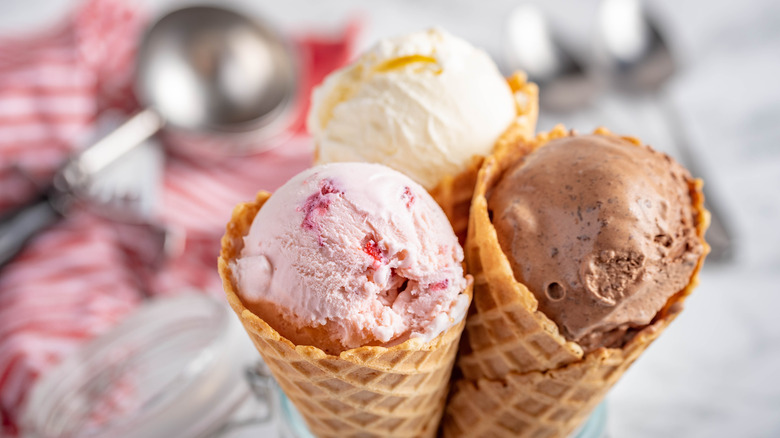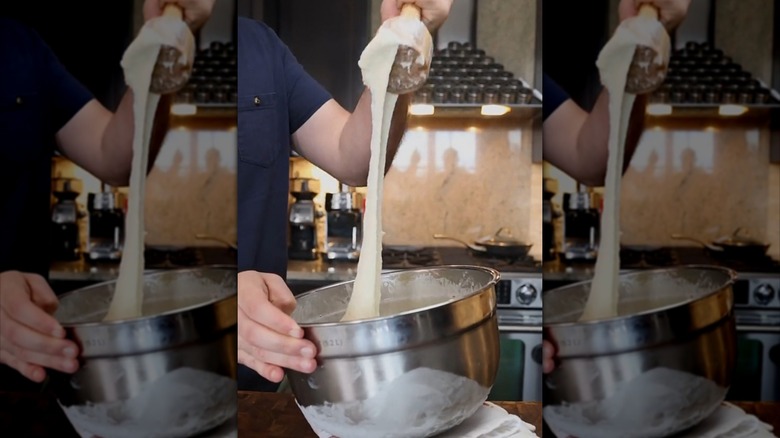Booza: The Stretchy Ice Cream From The Middle East
Playing with your food isn't usually a good look in public, but when you're eating stretchy ice cream, how can you not? The unique frozen dessert known as booza uses a technique that's been passed down for 500 years. Booza is an Arabic word for ice cream, which originated in the Middle East, specifically throughout Asia's Eastern Mediterranean region. Countries like Syria, Palestine, Jordan, Lebanon, and Israel all prefer this type of taffy-like ice cream, and it's only recently made its way to the States.
Family-run booza shops have been appearing in cities like Houston, New York City, and Columbus, attracting curious ice cream lovers and gaining a wider reputation via social media. Despite looking like a melty pull of mozzarella, this elastic Middle Eastern food doesn't maintain its Play-Doh texture when eaten. It's just as creamy and flavorful as any ice cream, and it's usually sprinkled with a salty pistachio topping.
Instead of being churned to remove air, booza is pounded with a wooden mallet and stretched repeatedly. It also melts much slower than regular ice cream, and it's all thanks to two very special ingredients: salep and mastic.
Booza is made with tree resin and flower roots
Booza's distinctly stretchy texture comes from Lebanese salep (sometimes spelled sahlab or sahlep), a flour made from ground orchid roots that replaces cornstarch as a thickening agent. Recreating booza in the U.S. usually presents a challenge, as salep powder can be hard to find.
Typical ice cream ingredients like milk, cream, and sugar are still present in booza. Instead of eggs enhancing the dessert's creamy texture, however, a tree bark sap called mastic is used. (It's also a common ingredient in fresh-tasting chewing gum.) Mastic is harvested from trees that are mainly indigenous to the Greek islands, but they also grow in the coastal regions of Spain, Portugal, and Morocco.
Booza is almost identical to the Turkish ice cream dondurma, which is traditionally made with goat's milk. While both treats are similarly stretchy thanks to mastic and salep, they differ slightly in texture and preparation. It's said that booza was once a luxury ice cream that only wealthy Syrians could afford to enjoy. Thankfully, this isn't the case for the few booza shops in the States, where you can buy a small cup for a fairly reasonable $5.

